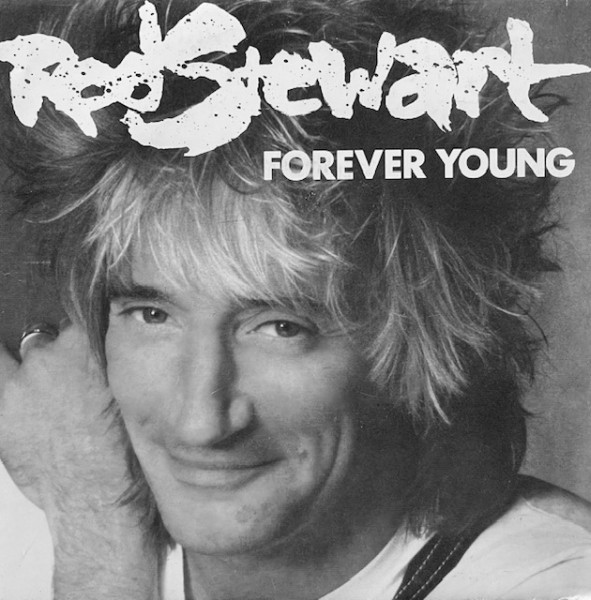|
| Forever YoungBob Dylan & The Band |
Writer(s): Bob Dylan (see lyrics here) First Recorded: Jne 1973 Released (album cut): January 17, 1974 Released (single): June 22, 1979 (live) First Charted: -- Peak: 12 CL, 1 DF (Click for codes to charts.) Sales (in millions): -- Airplay/Streaming (in millions): -- radio, 30.7 video, 29.86 streaming |
 | Forever YoungRod Stewart |
Writer(s): Jim Cregan, Kevin Savigar, Bob Dylan, Rod Stewart (see lyrics here) Released (single): June 3, 1988 First Charted: August 6, 1988 Peak: 12 BB, 17 CB, 14 RR, 3 AC, 13 AR, 57 UK, 9 CN, 94 AU, 1 DF (Click for codes to charts.) Sales (in millions): -- Airplay/Streaming (in millions): -- radio, 96.30 video, 52.44 streaming |
Awards (Bob Dylan):Click on award for more details. Awards (Rod Stewart): |
About the Song:After Bob Dylan established himself as one of history’s most celebrated songwriters via his work in the ‘60s, his output in the early ‘70s has often been viewed as a dip in quality. However, “Forever Young” stands out as a gem from this era. Dylan first recorded a demo of the song in June 1973. He said in the liner notes for the Biograph box set that “I wrote it thinking about one of my boys and not wanting to be too sentimental.” TC While he claims he wasn’t going for sentiment, the heart-tugging lullaby taps into the universal hopes a father has for his child to have a good life. The song was specifically written about Dylan’s oldest biological child, Jesse, born in 1966, WK but he had three more children at the time, including son Jakob, who made a career for himself as the lead singer of the Wallflowers. Two versions of “Forever Young” are featured on the 1974 album Planet Waves, recorded with the Band. A live version of the song was released in 1979 in support of the At Budokan album. The song also served as inspiration for a 2008 children’s book illustrated by Paul Rogers.  Joan Baez; Harry Belafonte; Johnny Cash; Jerry Garcia; Louisa Johnson (X Factor winner); Patti LaBelle; Meat Loaf; Peter, Paul & Mary; the Pretenders; Diana Ross; Peter Seeger; and Blake Shelton have all recorded the song. SH Chrisse Hynde of the Pretenders said, “It’s got such a beautiful lyric…The song is genius.” SF In 1988, Rod Stewart released a song entitled “Forever Young” on hisOut of Order album. The melody and music weren’t the same as Dylan’s song, but the idea and “architecture of the lyrics” WK shared enough similarities that Dylan was listed as a co-writer on the song.
Resources:
Related Links:First posted 5/23/2024. |









